Introduction
When embarking on the development of a Magento e-commerce website, a strategic approach to planning is essential. This involves establishing clear business objectives, understanding your target audience, and conducting thorough market research. Additionally, optimizing your website for mobile responsiveness is crucial in today's digital marketplace.
Choosing the right Magento version is also crucial, as it determines the features and capabilities available to your online store. Selecting a reliable hosting provider and securing a unique domain name are crucial first steps in setting up your Magento website. Once your website is set up, you need to configure it to personalize the shopping experience, integrate payment and shipping methods, and optimize it for performance and SEO.
Customizing and extending Magento's functionality allows you to create a unique online presence. Finally, launching your Magento store requires rigorous testing, implementing security measures, and integrating analytics and tracking systems. To sustain and enhance your store's success, post-launch maintenance and strategic marketing efforts are essential.
By following these steps, you can create a robust and successful Magento e-commerce website that meets and exceeds user expectations.
Planning Your Magento Website
When starting the development of an e-commerce website, a strategic approach to planning is essential. This involves the establishment of clear business objectives, whether it's boosting sales, generating leads, or enhancing brand recognition. Your website's design and functionality should be reflective of these goals. Moreover, it's imperative to conduct a comprehensive analysis of your target audience. Understanding your audience is fundamental to crafting a web experience that caters to their preferences, behaviors, and needs, which in turn can drive higher conversion rates. Market research is also crucial for insight into the competitive landscape, enabling you to position your offerings effectively. Moreover, taking into account the utmost significance of mobile user experience in the current digital market—with more than half of website traffic originating from mobile devices and users expecting fast-loading pages—enhancing your e-commerce website for mobile responsiveness cannot be ignored. As statistics highlight, a mobile site that loads within two seconds boasts a 15% higher conversion rate, emphasizing the critical role of performance. Incorporating this understanding into your planning process will establish the foundation for a successful e-commerce website that not only meets but exceeds user expectations.
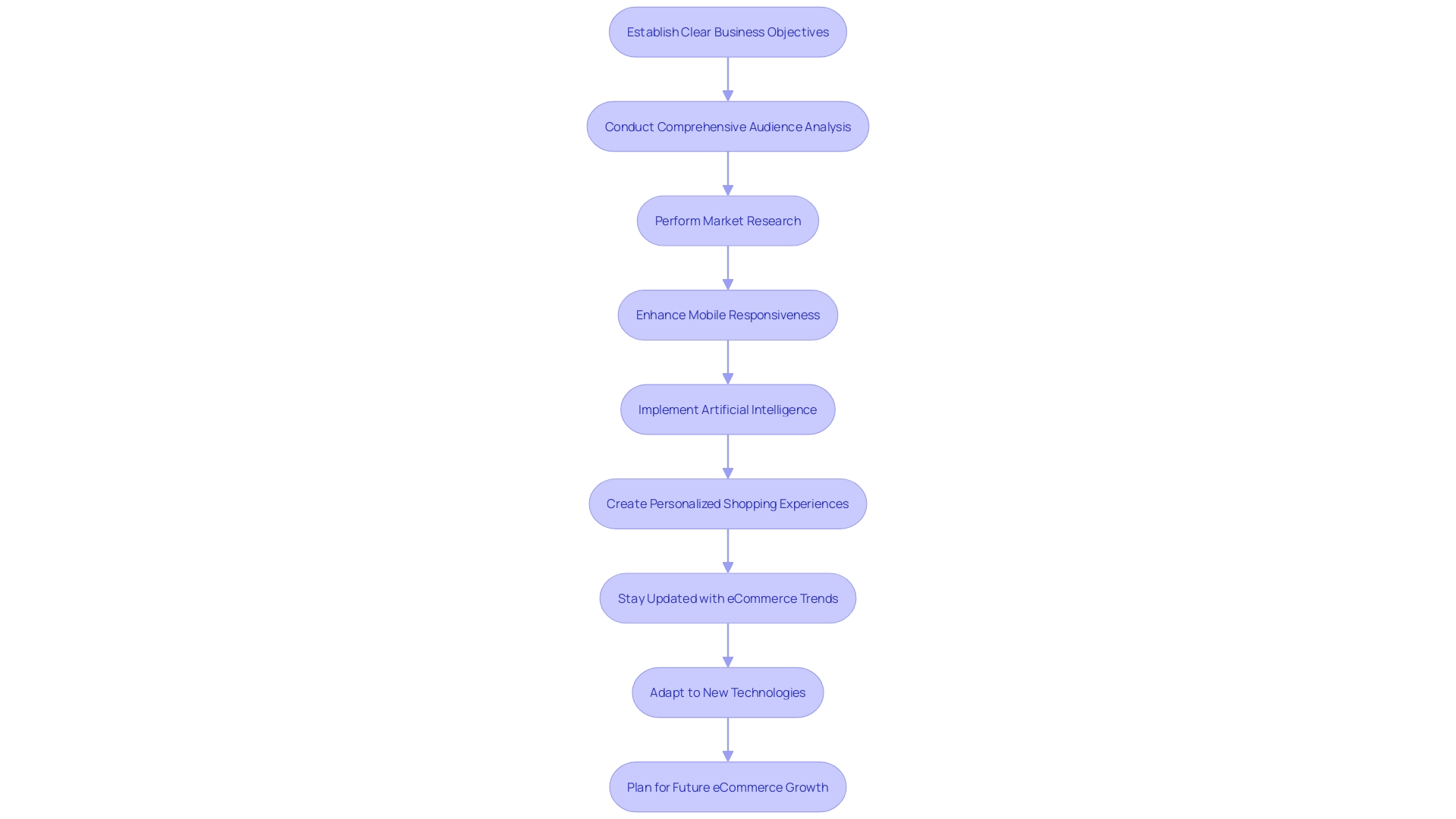
Choosing the Right Magento Version
Adobe Commerce, previously referred to as Magento, offers a variety of versions each tailored to different business needs, and selecting the ideal one is crucial for your online store's success. Open Source, previously Community Edition, is a robust platform that provides the flexibility necessary for customization and integration, making it a popular choice for businesses looking for an adaptable and scalable e-commerce solution without significant investment. On the other hand, Commerce, formerly Enterprise Edition, is the premium version offering exclusive features such as advanced marketing tools, customer reward programs, and full-page caching for better performance.
With the rapid expansion of the e-commerce industry, projected to grow at a CAGR of 20.2% from 2023 to 2030, choosing the right e-commerce platform becomes even more imperative to stay competitive. This is where the Business Intelligence software comes into play, providing a cloud-based analytics platform designed to collect, analyze, and visualize data from your store. It helps in making informed decisions by organizing overwhelming amounts of data into actionable insights through advanced reports and dashboards.
When making a decision between Open Source and Commerce, consider the unique selling points of your products, as well as the complexity of your inventory. For example, the recent updates from Shopify have greatly enhanced the merchandising of goods, enabling more effective listing of complex items and variations. Similarly, a Commerce platform might be preferable if you require sophisticated product configuration and merchandising capabilities. Consider the advice from leading development agencies specializing in e-commerce platforms that highlight the significance of a system that can adjust to the evolving analytical and operational requirements of your business.
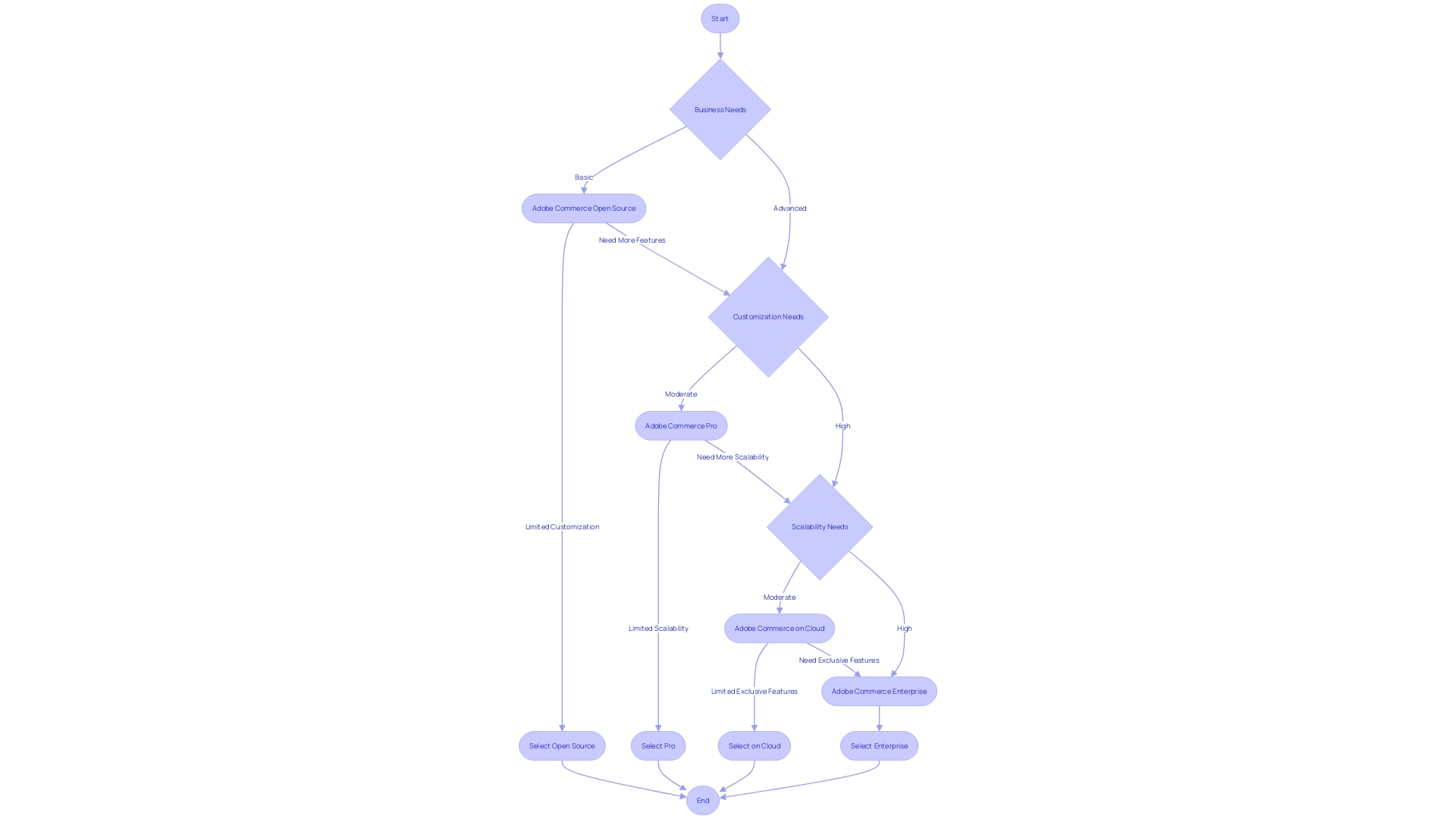
Setting Up Your Hosting and Domain
Selecting a top-notch hosting provider and securing a unique domain name are crucial first steps in setting up a Magento ecommerce website. A hosting provider is essentially your online storefront's landlord, offering you space on the internet to display your products and interact with buyers. A domain name, on the other hand, is your digital address that individuals use to locate your online store. It's important to choose a domain name that reflects your brand and is easy to remember.
When choosing a hosting service, prioritize speed, reliability, and efficiency. An insightful dashboard that allows you to monitor your site's performance and make necessary adjustments is invaluable. Remember, a slow-loading site or one that frequently crashes during high-traffic periods can severely damage customer trust and your brand's reputation. Learn from the cautionary tale of a business that suffered from hosting server performance issues, leading to over an hour of downtime during crucial campaign launches. Instead, aim for the resilience and stability exemplified by platforms like Chess.com, which manages massive daily traffic without compromising user experience.
Web hosting gives you control over your site's content and appearance, unlike some site builders that limit customization and ownership. With a CMS like WordPress, you have the autonomy to craft the perfect online presence for your business. Additionally, consider a hosting provider that values open, free, and safe internet, offers industry-premium services at affordable prices, and is backed by a support team ready to assist you around the clock.
Finally, registering your domain name ensures that no one else can claim your online space. With companies like Namecheap, you can expect exceptional service and support, ensuring that your domain registration is a seamless process. Remember, your domain name is the gateway for visitors to discover your website, so make it count.
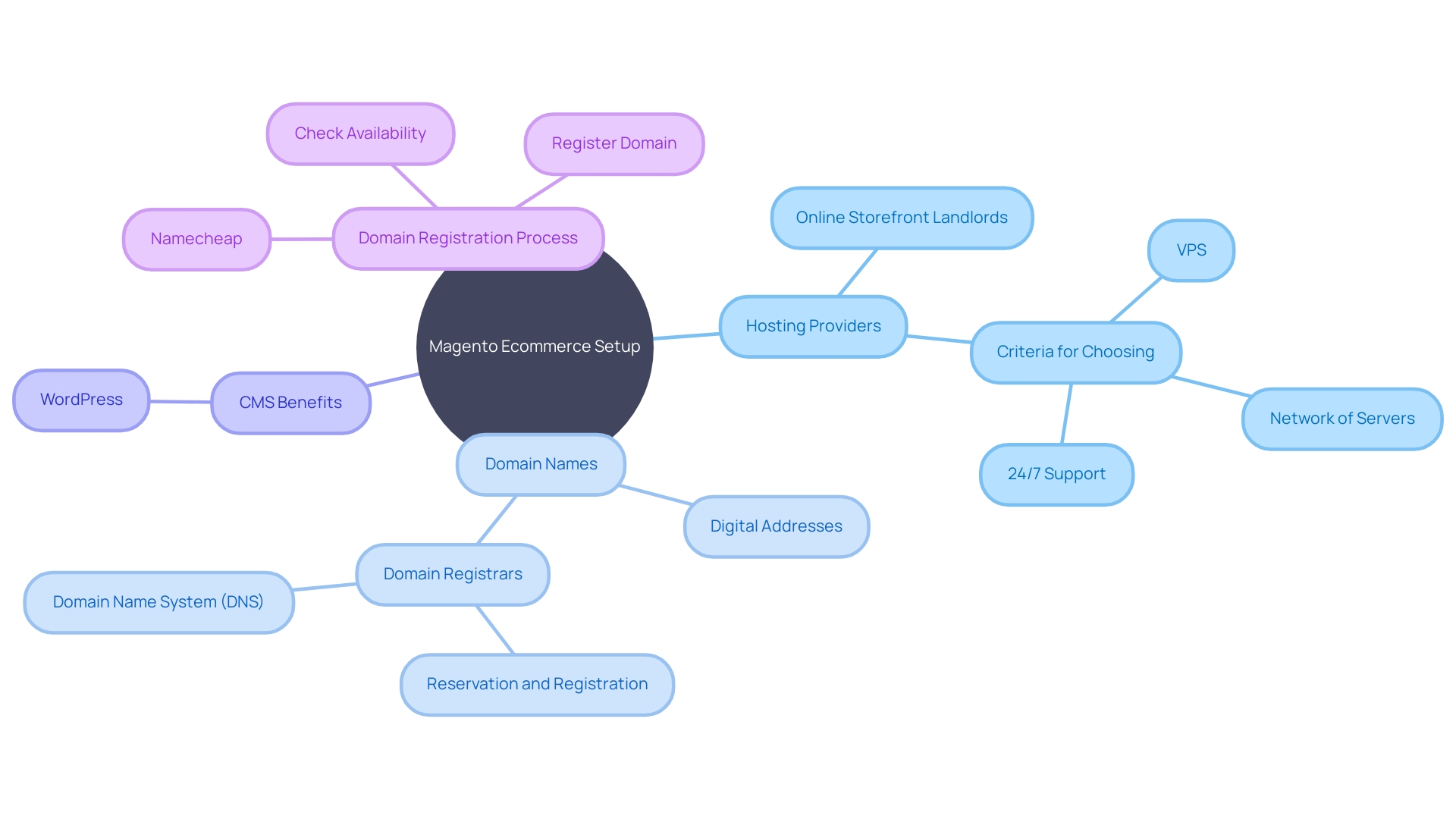
Installing Magento
Setting up the e-commerce platform on your hosting server is a crucial step in launching your online store, and while it may seem challenging, the process can be broken down into manageable steps. First, let's delve into the manual installation process. Here, you will start by downloading the installation package of the platform, creating a database through your hosting provider, and configuring your server environment. This includes ensuring you have a LAMP (Linux, Apache, MySQL, PHP) stack or a similar setup such as LEMP (Linux, Nginx, MySQL, PHP) on your server, as the software requires a specific environment to run efficiently.
For those looking for a more streamlined process, the platform also provides installation scripts that greatly simplify the setup. These scripts can automate many of the steps involved in the manual process, saving you time and reducing the potential for human error. In addition, Magento's versatility is emphasized by its extensive marketplace, which hosts thousands of extensions, enabling you to enhance the functionality of your online shop to meet your specific business requirements.
Furthermore, as you begin this installation process, keep in mind to maintain your store's database of items current and well-organized. A complete database containing essential information such as item names, descriptions, prices, and more is crucial for the success of any e-commerce platform. It serves as a central source of truth for your business, ensuring consistency and accuracy across your online presence. Whether you are a small business or a large enterprise, the strong framework of this platform supports your growth and offers the freedom to create a unique e-commerce experience for your customers.
As with any technical process, staying informed about the latest updates and best practices is essential. For instance, being aware of reminders to update friendly URLs after duplicating a product or utilizing features that allow for easier product reordering can enhance your store's efficiency and search engine visibility. Staying updated with news and updates in the e-commerce industry, like upcoming live sessions from platform providers, can provide insights and assist you in addressing any questions you may have during your installation and beyond. Armed with these steps and insights, you'll be well on your way to a successful installation.
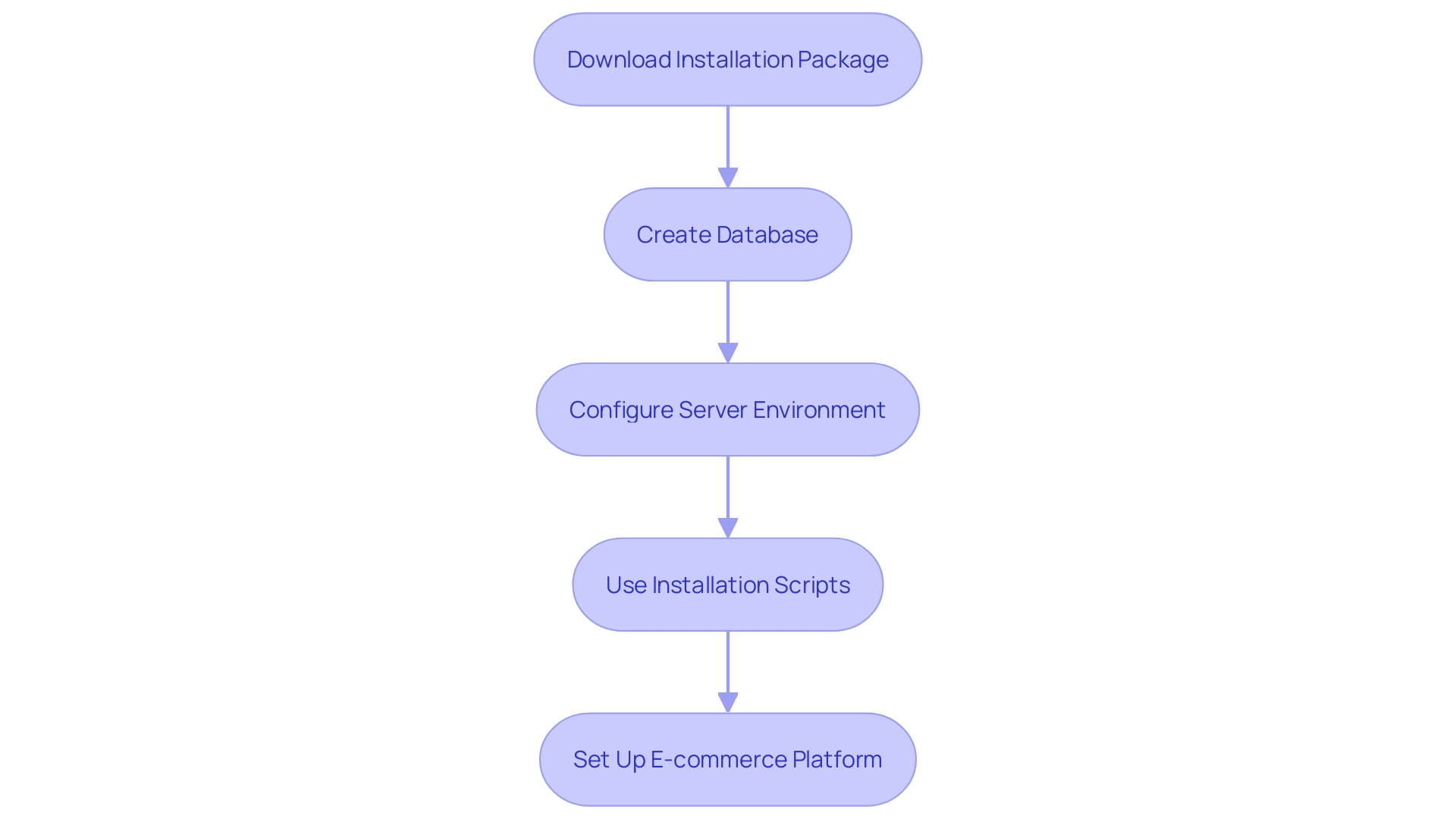
Selecting and Customizing a Magento Theme
Choosing the appropriate theme for your e-commerce website is a critical decision that affects both user experience and brand identity. The key is to determine the specific needs of your online store, whether it's a blog, portfolio, or a full-fledged retail site. This will inform the theme choice, ensuring it aligns perfectly with your objectives. Responsiveness is non-negotiable in today's mobile-first world. With over half of web traffic coming from mobile devices, a theme that adapts flawlessly across all platforms is a fundamental requirement, not an option.
Beyond aesthetics, your theme's design must handle technical data efficiently, much like Nets' approach to transforming complex tables and schemes into user-friendly formats. This focus on navigability and clarity encourages user exploration, enhancing engagement and potentially increasing conversion rates. Remember, a site's load time is critical—mobile sites that load in two seconds or less see a 15% higher conversion rate—so prioritize performance alongside visual appeal.
Embrace the possibilities of open source e-commerce platforms, such as a platform that offers unparalleled flexibility and control. The customization options are extensive, allowing you to tailor every aspect to match your brand's unique style and ethos. When considering web design services, thoroughly research and compare providers to find a partner that resonates with your vision and has a proven track record in your industry. An e-commerce theme that is both feature-rich and visually appealing will serve as the basis for a digital online shop that not only draws in visitors but turns them into devoted buyers.
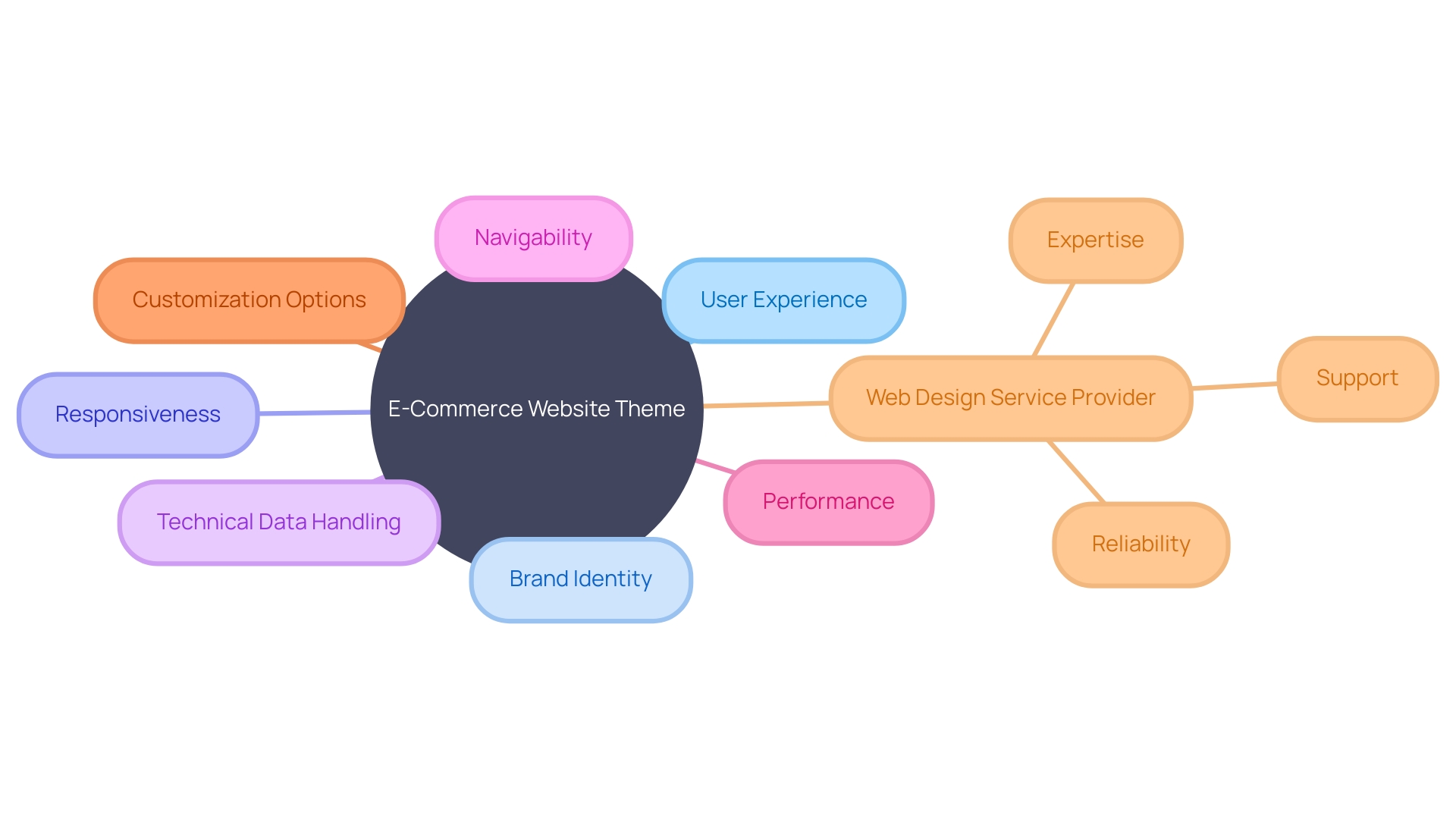
Configuring Magento Store Setup and Settings
After setting up Magento, the true enchantment starts with the configuration of your online shop. This crucial stage entails customizing the identity of your establishment and enhancing the shopping experience for individuals. To begin, display your merchandise in the optimal way with premium images that load quickly, improving user involvement and potentially boosting conversion rates. Adjust the balance between image quality and loading speed to ensure visitors have a seamless browsing experience.
Next, incorporate a range of payment methods into your establishment, bearing in mind that secure transactions are essential for building trust with buyers. Consider utilizing SSL certificates to protect sensitive data and explore options such as DV, OV, and EV certificates to match your security needs. As you configure shipping options, stay informed about the latest developments in Commerce Core, such as the update of EU VAT rates for 2024, to ensure compliance and accuracy in your transactions.
For those exploring the realm of digital items - from eBooks to video courses and beyond - it's crucial to configure your store to handle the distinctive features of these items. They require no physical shipping and can be delivered instantly, offering a convenient and cost-effective solution for both you and your customers. Whether you're improving an existing Magento setup or starting fresh, comprehending the intricacies of selling digital items will position you to tap into this expanding market.
In an era where eCommerce competition is fierce, it's crucial to optimize your store for search engine performance. Utilize schemas, craft compelling product descriptions, and ensure your pages are search engine optimized. By offering informative content that addresses the inquiries of your target audience at the beginning of their purchasing process, you establish the foundation for a fruitful conversion.
Lastly, leverage Business Intelligence to make data-driven decisions. This powerful analytics platform helps you understand customer behaviors and market trends, allowing you to make strategic decisions that drive growth. With the global B2B eCommerce market expanding rapidly, staying ahead with insightful analytics is key to maintaining a competitive edge.
By meticulously configuring your Magento establishment with these considerations in mind, you lay the foundation for a robust and successful eCommerce platform that is ready to meet the demands of today's digital marketplace.
Creating a Product Catalog
Developing a comprehensive and efficient catalog is crucial for the success of any ecommerce website. To enhance the performance of your Magento-based online store, it's crucial to meticulously create and manage your merchandise catalog. Concentrating on the intricate details of your item attributes—from essential information like name, weight, and color to more nuanced details such as certifications and marketing claims—is the foundation of a strong item database. Categories, inventory management, and item variations all play crucial roles in creating an ecommerce environment that not only satisfies but also anticipates buyer requirements.
Your merchandise catalog should function as a central hub of knowledge, a 'single source of truth', encompassing all necessary attributes that define your merchandise offerings. This includes everything an individual might inquire about, ensuring that your team can confidently provide accurate information swiftly, enhancing the experience and streamlining internal processes. Based on industry insights, establishing a detailed and searchable item catalog is a step that can set your business apart, allowing for ease of access and better item discovery for your customers.
Furthermore, the ever-changing character of digital items, including eBooks, software, and online courses, necessitates a versatile and expandable approach to catalog management. As ecommerce continuously evolves, demonstrated by initiatives like Amazon's Great Indian Festival, which offers a wide selection of merchandise with enticing deals, your online store must be flexible and ready to effectively showcase a diverse range of items. By utilizing the powerful features of Magento, you can guarantee that your product catalog is not only efficiently arranged but also equipped to handle the needs of the contemporary ecommerce landscape, ultimately driving sales and satisfaction.
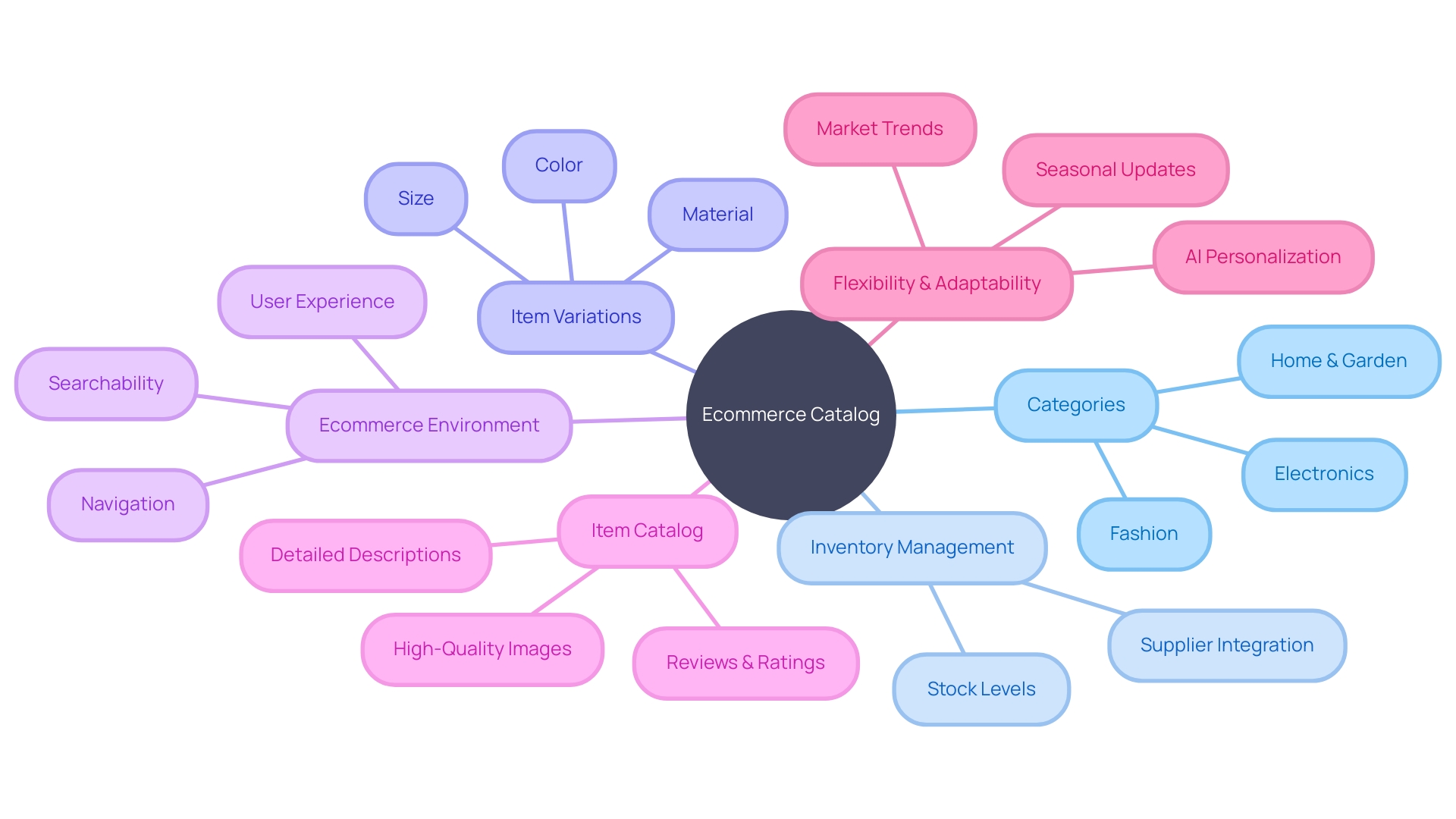
Setting Up Payment and Shipping Methods
Navigating the intricacies of payment and shipping options is crucial to creating a seamless e-commerce experience that guarantees customer satisfaction. Seamless integration of payment gateways like credit card services and PayPal is more than a convenience; it's a cornerstone of the modern online purchasing process. The clarity of pricing remains a critical factor, as evidenced by the complexities encountered in the courier industry, where the cost to ship a 1kg parcel can vary significantly. Just as some couriers offer tools for upfront pricing, ensuring transparency in payment methods is vital for consumer trust and satisfaction.
Similarly, shipping should not cause worry for clients. Providing immediate confirmation and clear instructions for shipping, akin to the reassurance desired after booking an Airbnb, is necessary to maintain confidence in the transaction. This is particularly true when the client's task—such as dropping off a parcel—is still pending.
A robust checkout process is indispensable to prevent abandonment, whether at the cart or payment stage. The recent surge in online shopping, with over 30% of the world population engaging in e-commerce, highlights the urgency of optimizing these processes. The e-retail market, burgeoning at an estimated global value of $5.7 trillion, underscores the necessity for e-commerce platforms to address the nuances of payment and shipping to capitalize on this growth.
Moreover, a straightforward return policy is not just a courtesy but an expectation, influencing 68% of online buying decisions. Clearly delineated return procedures, refund options, and potentially even lifetime guarantees can significantly enhance client loyalty.
In summary, the seamless integration of payment and shipping methods, underpinned by transparency and user reassurance, is not just beneficial but essential for e-commerce success. As the Indian e-commerce market thrives, with inspiring stories of entrepreneurs on platforms like Flipkart, and as brands like Woo embrace their customer-driven identity, it's evident that the focus on a positive customer service experience is a pivotal factor driving growth and customer loyalty.
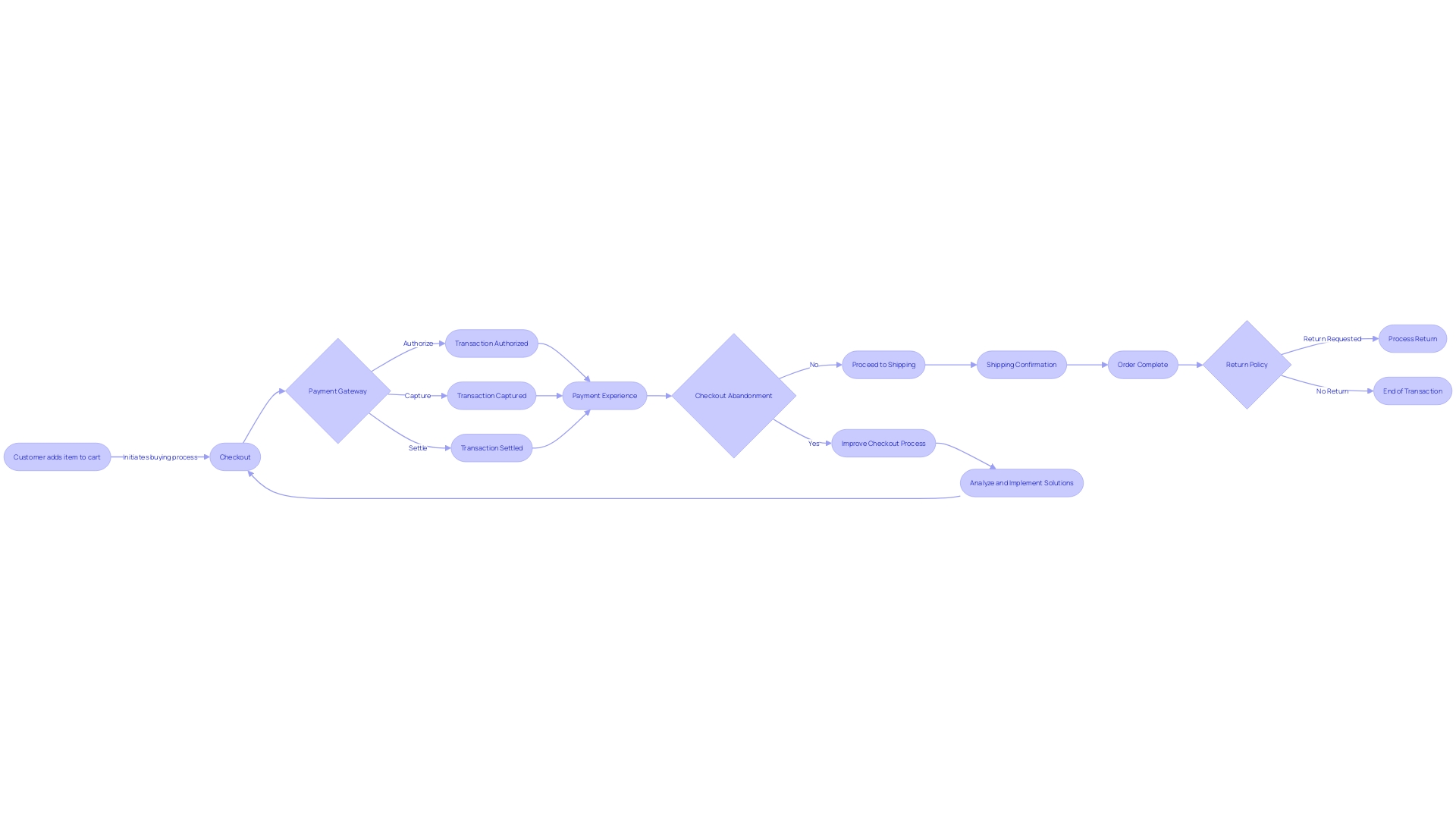
Customizing and Extending Magento Functionality
The powerful platform offers unmatched customization, enabling businesses to build a distinctive online presence that aligns with their brand and meets their particular requirements. With a wide selection of extensions and modules available in the Marketplace, businesses can improve their shop's functionality, adjusting to their changing needs. This flexibility extends to design as well; the theming capabilities of the e-commerce platform enable the crafting of engaging layouts and an aesthetic that captures the essence of your business, similar to how Alexandra Murgu's portfolio website, Armur, reflects her personal story and vision within the film industry.
The integration of third-party services is seamless, ensuring that your e-commerce shop can connect with vital business tools and systems. This is exemplified by Nets, a digital payment solutions provider, who successfully integrated complex technical data into their platform, enhancing user experience and information discovery. As emphasized by recent developments in the industry, like the convenient URL reminder after product duplication and the drag-and-drop reordering feature, the platform constantly advances to streamline management tasks, making it simpler for owners to maintain their online presence.
Incorporating user feedback is key, as seen with WooCommerce's developer documentation, which emphasizes the importance of community contribution and support. This collaborative approach to e-commerce platform development ensures that the tools and features available meet the needs of developers and merchants alike. With the right approach to customization, businesses can create not just an online store, but a powerful e-commerce ecosystem that's responsive across all devices and screens, offering a seamless shopping experience that today's customers—over 67% of whom prefer self-service options—have come to expect.
Optimizing Your Magento Website for Performance and SEO
For businesses operating in the digital era, website performance is not merely about speed; it is the bedrock of a seamless user experience and a pivotal factor in achieving higher search engine rankings. Caching, image optimization, code refinement, and strategic SEO practices are the linchpins of Magento website optimization.
Effective image optimization strikes the right balance between visual quality and loading speed, ensuring that high-resolution images do not impede site performance. This equilibrium is vital as it motivates visitors to investigate and interact with additional items, potentially boosting conversion rates.
With the dominance of Google in the search engine market, accounting for nearly 90% of searches in North America, the art of SEO has evolved. It is no longer just about keyword density but about delivering content that addresses the queries of online researchers. Retailers must leverage schema markup, comprehensive product descriptions, and locally optimized pages to enhance visibility and climb the search engine rankings.
The recent advancements in search, such as Google's testing of SGE in main search results, highlight the importance of providing succinct answers that encourage deeper web exploration. This development underscores the need for websites to present AI-powered overviews that not only satisfy immediate informational needs but also guide users to a broader spectrum of content.
Moreover, the principles of web design best practices encompass more than aesthetics; they are about creating an efficient, user-friendly interface. Mobile responsiveness is especially important, as more than half of the internet traffic currently comes from mobile devices, and a well-functioning mobile site is a prerequisite for retention and higher conversion rates.
Statistics reveal the significance of mobile UX, with over 50% of users disengaging from brands with subpar mobile sites, and mobile sites that load in two seconds or less observing a 15% higher conversion rate than the average. These metrics serve as a stark reminder of the user's preference for performance over design complexity.
In summary, website optimization for the Magento platform is a multifaceted endeavor. It requires a comprehensive strategy that includes technical improvements, content relevance, and a steadfast dedication to the user experience, ultimately promoting long-term relationships and business growth.
Launching Your Magento Store
As you get ready to reveal your Magento store to the world, it's crucial to take the last measures that will guarantee a smooth and secure experience for your clients. Start by thoroughly testing your website's user experience (UX); any investment in UX improvements can greatly enhance satisfaction and your site's performance metrics. Key elements like loading time, navigation, and the payment process must be examined to ensure that individuals encounter no obstacles in their shopping experience.
In addition, establishing SSL certificates is an essential measure for protecting the sensitive data of your clients. This is not just about security; it's about building trust. When consumers see that secure lock icon in the browser, they feel more confident in doing business with you. Additionally, with the rise of cyber threats, security testing of your website should be as thorough as a knight inspecting a fortress—leaving no stone unturned.
Next, integrate robust analytics and tracking systems. These tools are your eyes and ears, providing invaluable insights into consumer behavior and the performance of your establishment. They enable you to make data-driven decisions, tailor your offerings, and optimize your marketing strategies. Given that a significant 43% of small businesses are enhancing their website performance, it's clear that a strong online presence backed by solid analytics is no longer optional.
Lastly, implementing proactive security measures is critical. As the saying goes, 'an ounce of prevention is worth a pound of cure.' This is particularly true in e-commerce, where protecting your digital assets can mean the difference between a thriving business and a compromised operation. Ensure compliance with legal standards like GDPR and copyright laws, and remember that a security breach does more than just disrupt operations—it can erode customer trust, which is incredibly hard to regain.
By following these steps, you are not just starting an online business; you are establishing the groundwork for a reliable, safe, and customer-focused shopping destination.
Post-Launch Maintenance and Marketing Strategies
To sustain and enhance your Magento store after launch, it's essential to focus on continuous improvement and strategic marketing efforts. With shoppers increasingly starting their journey online, comparing items, and seeking value, a dynamic digital and website experience is crucial to catch their attention early on. It's not enough just to list products; retailers must use schema markups, craft compelling product descriptions, and optimize their pages for search engines to improve visibility and outrank competitors.
Effective content marketing goes beyond keyword density; it's about providing informative content that addresses potential buyers' inquiries even before they're prepared to make a purchase. Regular content updates, from tweaking a blog post with internal links to revamping your homepage's visuals, are key to keeping your website fresh and engaging. And with the omnichannel approach, measuring marketing performance across different platforms with a single tool can streamline your strategy.
Moreover, leveraging social media promotion, email marketing campaigns, and other digital marketing techniques can build a robust online presence. As seen in the success of platforms like Chess.com, which serves millions of users daily, concentrating on your niche and establishing a stable IT infrastructure can result in substantial growth and a devoted user base.
Against the background of significant e-commerce events such as Amazon India's Great Indian Festival, where individuals are presented with numerous deals, it's evident that special promotions and sales are also successful methods to allure and maintain individuals. Flipkart's support for innovation and entrepreneurship further highlights the importance of backing your e-commerce endeavors with a culture of creativity and customer-centricity.
Remember, the goal is to establish your store as the definitive source for products and information in your niche. By harnessing detailed insights and case studies, you can demonstrate expertise that not only aligns with search engine algorithms but also provides real value to your audience. Ultimately, by consulting with go-to-market teams and aligning your content strategy with customer needs, you can build a sustainable and valuable online presence that thrives in the competitive e-commerce landscape.
Conclusion
In conclusion, a strategic approach to planning is crucial when developing a Magento e-commerce website. Understand your target audience, optimize for mobile responsiveness, and choose the right Magento version based on your business needs. Select a reliable hosting provider and secure a unique domain name to set up your website.
Install Magento on your hosting server, keeping your product database organized and up-to-date. Customize your website's theme to align with your brand and optimize the shopping experience. Configure payment and shipping methods, and optimize your store for performance and SEO.
Launching your Magento store requires rigorous testing, implementing security measures, and integrating analytics and tracking systems. Post-launch, focus on continuous improvement and strategic marketing efforts to enhance your online presence.
By following these steps, you can create a robust and successful Magento e-commerce website that meets and exceeds user expectations.





